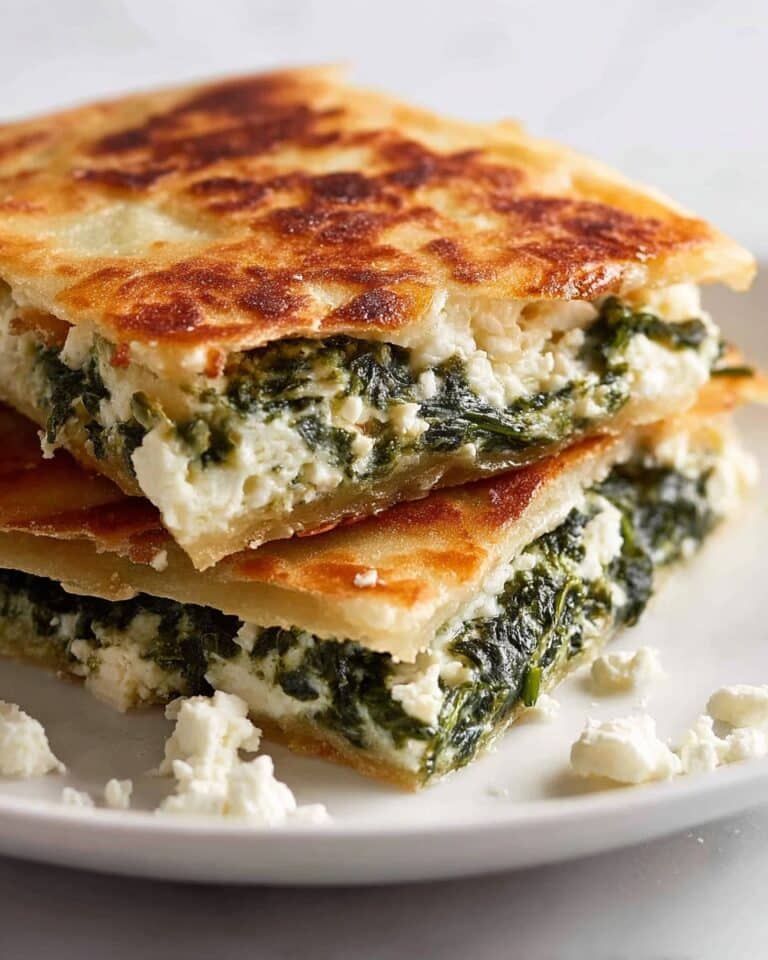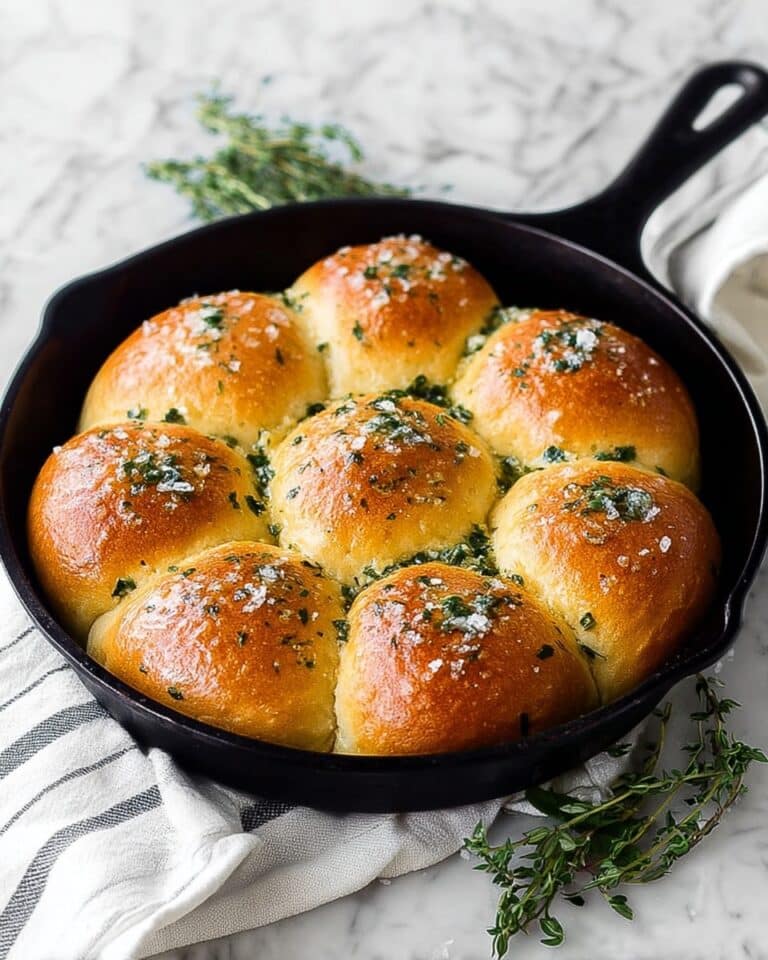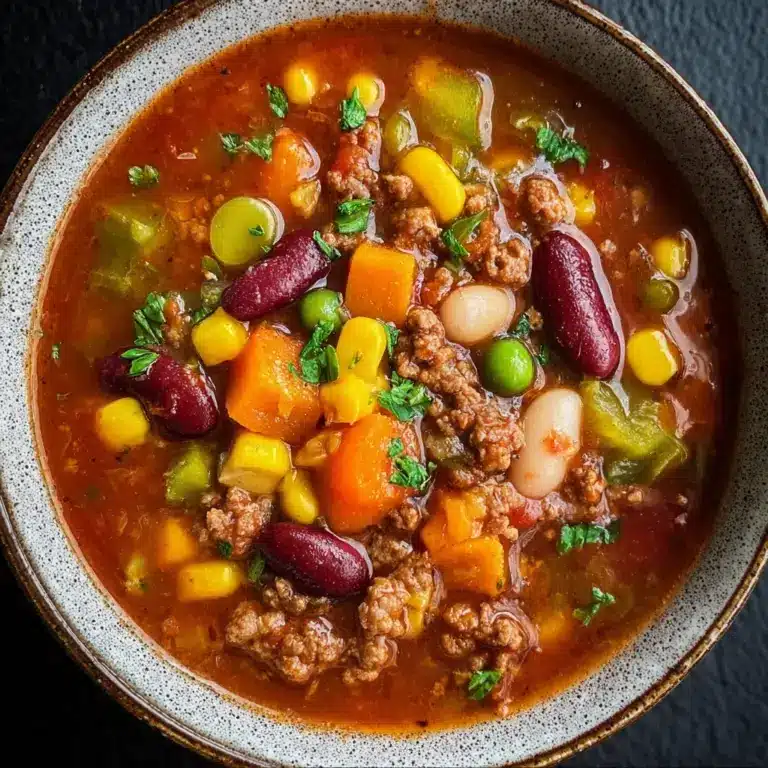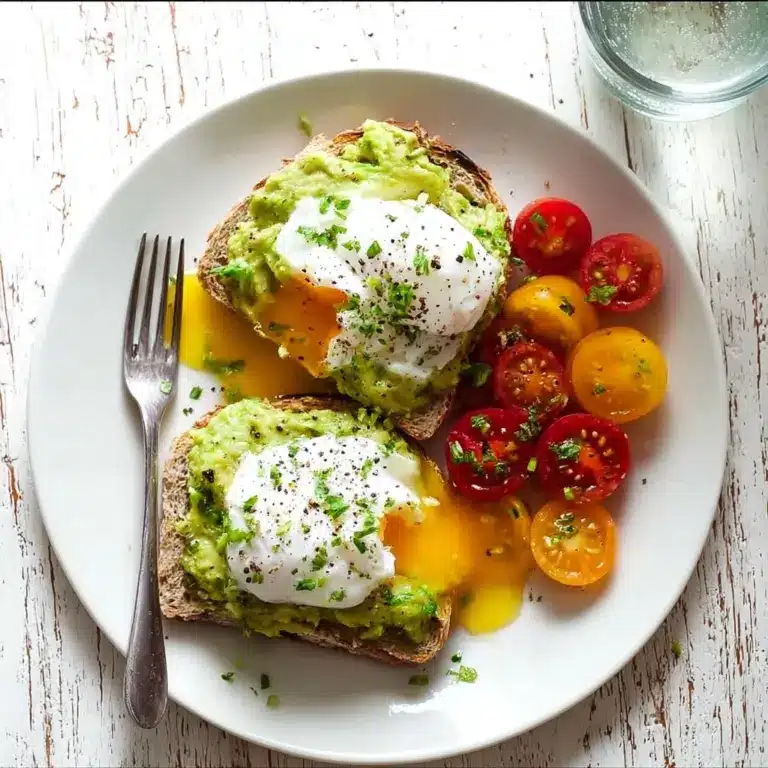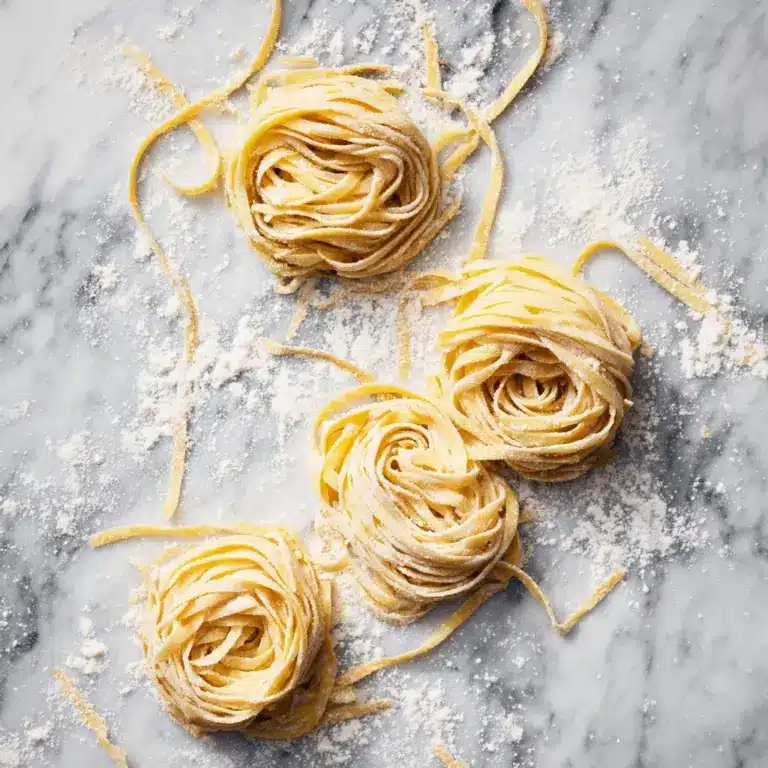Japanese-Style Katsudon Rice Bowls Recipe
If you are craving something comforting, hearty, yet delightfully sophisticated, Japanese-Style Katsudon Rice Bowls are exactly what you need. This dish brings together golden, crispy tofu katsu layered over fluffy steamed Japanese rice, drenched in an umami-rich broth infused with mushrooms and a whisper of sweetness. The harmony of textures and flavors creates a bowl that’s both satisfying and soul-warming, perfect for sharing or savoring solo on any day you want to treat yourself with some cozy Japanese-inspired goodness.
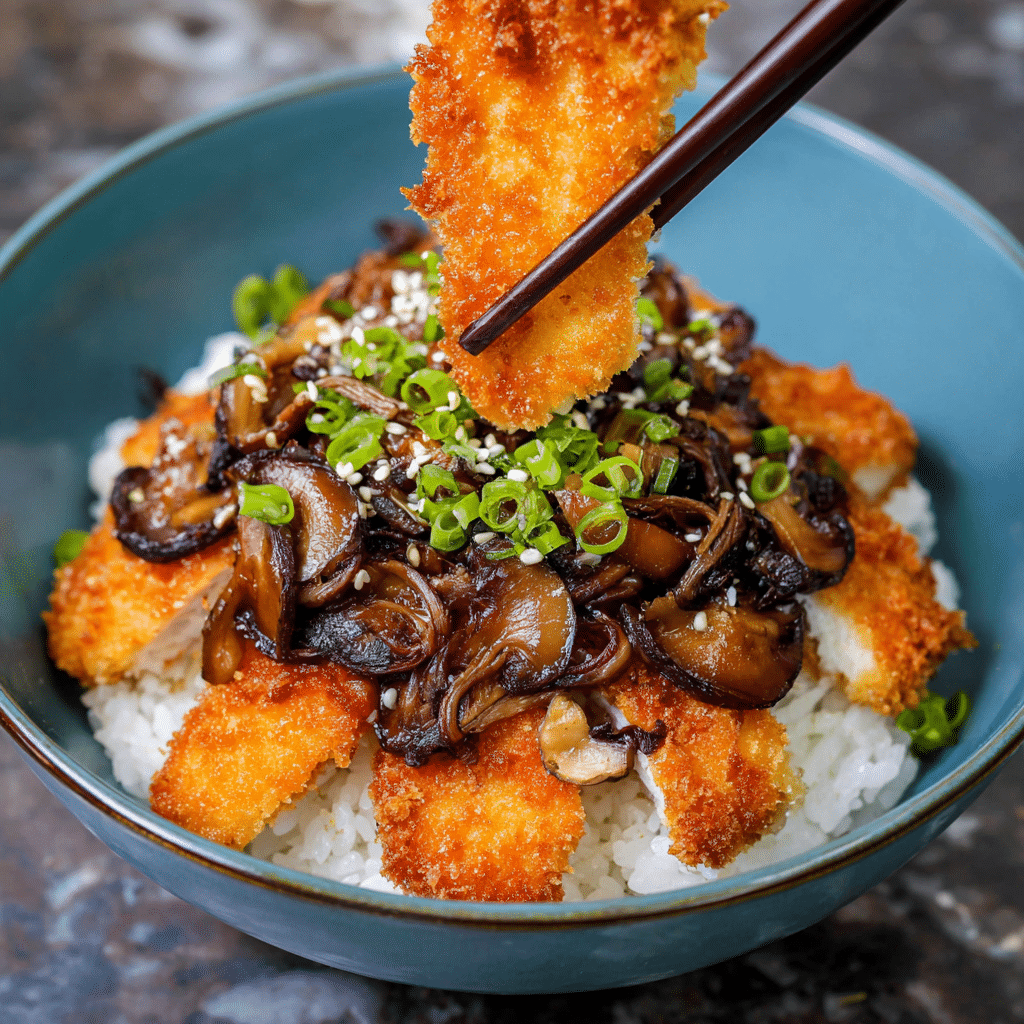
Ingredients You’ll Need
This recipe calls for simple but crucial ingredients that work in perfect harmony to deliver authentic taste and texture. Each component, from the tofu to the Japanese bread crumbs and umami-packed vegan dashi, plays a vital role in creating that irresistible depth of flavor and inviting appearance of Japanese-Style Katsudon Rice Bowls.
- Extra firm tofu: Drained and pressed, it forms the crispy katsu base with the perfect bite.
- Salt: Enhances flavor in both tofu and the broth.
- All-purpose flour: Helps create the batter that lets the breadcrumbs stick to the tofu.
- Cornstarch: Adds extra crispiness to the tofu exterior when fried.
- Baking powder: Lightens the batter for a delicate yet crunchy coating.
- Japanese or panko bread crumbs: The golden crust that’s signature to any katsu.
- Neutral oil: For frying the tofu to golden perfection.
- Dried shiitake mushrooms and kombu: Soaked overnight to create a rich vegan dashi broth bursting with umami.
- Vegan dashi or stock: The savory base that infuses the simmering sauce with flavor.
- White onion: Thinly sliced to add a subtle sweetness and texture in the sauce.
- Sugar: Balances saltiness with a gentle sweetness.
- Mirin (or sake): Adds a mild sweetness and depth characteristic of Japanese cooking.
- Soy sauce: The salty umami backbone of the sauce.
- Vegan Just Egg: (optional) Pours over the simmering tofu for a luscious, silky finish that mimics traditional eggs.
- Steamed Japanese rice: The fluffy bed that holds all the flavors lovingly together.
- Chopped spring onions and sesame seeds: Adds freshness and nutty crunch as garnishes.
How to Make Japanese-Style Katsudon Rice Bowls
Step 1: Prepare the Umami Dashi
Start by soaking the dried shiitake mushrooms and kombu in room temperature water overnight. This simple soak transforms the water into a deeply flavorful vegan dashi that forms the perfect umami-rich base for the sauce. Be sure not to discard this soaking liquid, as it is the soul of your katsudon broth.
Step 2: Press and Slice the Tofu
Drain the tofu carefully, using a tofu press or by wrapping it in paper towels and pressing under a weighted flat surface for 15 minutes. This step ensures your tofu is firm enough for frying without turning soggy. Slice into ½-inch thick slabs to preserve integrity during cooking.
Step 3: Prepare the Batter and Breading Station
In a bowl, mix flour, cornstarch, baking powder, and salt, then gradually whisk in room temperature water until you achieve a thick pancake batter consistency. Set the panko breadcrumbs on a separate plate ready for coating. This two-step breading creates the irresistible crunchy layer surrounding the tofu.
Step 4: Bread and Fry the Tofu Katsu
Dip each tofu slab into the batter and then coat thoroughly with breadcrumbs. Heat oil in a pan until it sizzles when a breadcrumb is tested, then fry tofu over medium heat for 6-8 minutes, turning to achieve an even golden brown crust on both sides. Let cool slightly before slicing into strips.
Step 5: Simmer the Sauce
Remove excess oil from the pan, add the mushroom soaking liquid, onions, and sliced mushrooms to the pan. Let everything simmer for a few minutes, then stir in soy sauce, mirin (or sake), and sugar. Allow the sauce to thicken just slightly as the flavors marry, tasting and adjusting seasoning if desired.
Step 6: Combine Tofu and Sauce
Gently nestle the sliced tofu katsu into the simmering sauce, spooning liquid over the pieces. For an authentic touch, pour the vegan Just Egg mixture over the tofu and let it cook gently until set, which adds a creamy texture that beautifully contrasts the crispy tofu.
Step 7: Assemble Your Japanese-Style Katsudon Rice Bowls
Arrange steamed Japanese rice in bowls, lay the tofu katsu with simmered onions and mushrooms on top, and pour over any remaining sauce for maximum flavor. Garnish generously with chopped spring onions and sesame seeds for a vibrant finish.
How to Serve Japanese-Style Katsudon Rice Bowls
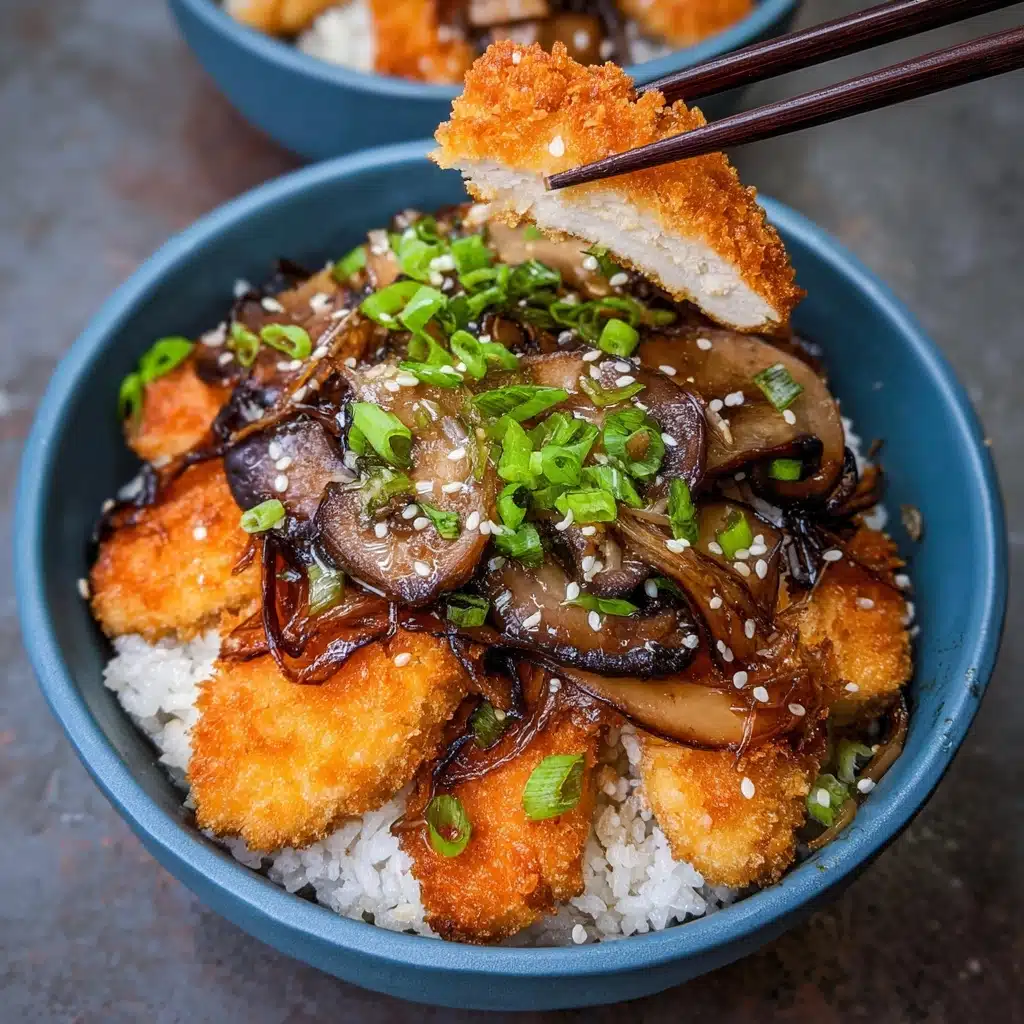
Garnishes
Fresh chopped spring onions introduce a bright bite that cuts through the richness of the tofu and sauce. Toasted sesame seeds lend a subtle nutty crunch and wonderful aroma, perfectly complementing the layered flavors of your katsudon.
Side Dishes
Serve your Japanese-Style Katsudon Rice Bowls alongside a crisp cucumber salad or pickled vegetables to add contrast and balance. Steamed or stir-fried greens also offer a refreshing counterpoint to the savory richness of the dish.
Creative Ways to Present
For a shared meal, present the tofu katsu sliced beautifully atop a communal bowl of rice surrounded by small dishes of garnishes and condiments like pickled ginger or spicy mayo. Alternatively, serve each bowl with a soft boiled egg on top for an indulgent twist.
Make Ahead and Storage
Storing Leftovers
Keep leftover tofu katsu and sauce stored separately in airtight containers in the refrigerator for up to 3 days. This prevents the crispy tofu from losing its crunch before reheating.
Freezing
You can freeze tofu katsu pieces after frying but before adding sauce by wrapping them tightly and placing in a freezer-safe bag for up to one month. Thaw completely before reheating to retain texture.
Reheating
Reheat tofu katsu in a skillet or oven to restore crispiness rather than microwaving. Warm the sauce gently in a small pot and combine just before serving to keep the dish fresh and vibrant.
FAQs
Can I use regular eggs instead of vegan Just Egg?
Absolutely! Traditional katsudon usually uses regular eggs; just pour beaten eggs over the simmering tofu katsu and cook until softly set.
Is there an alternative to panko breadcrumbs?
If you don’t have panko, you can use crushed cornflakes or regular breadcrumbs, though panko provides the lightest, crunchiest texture.
Can I make Japanese-Style Katsudon Rice Bowls gluten-free?
Yes, by using gluten-free flour and gluten-free breadcrumbs, plus tamari instead of soy sauce, you can enjoy a gluten-free version with the same delicious flavor.
What rice is best for katsudon?
Short-grain Japanese rice is ideal because of its sticky and fluffy texture that holds together nicely under the flavorful toppings.
How can I make this dish more flavorful?
Using homemade dashi or adding a splash of sake or umami-rich mushroom broth can deepen the flavor even more, making your Japanese-Style Katsudon Rice Bowls truly exceptional.
Final Thoughts
Making Japanese-Style Katsudon Rice Bowls at home is a rewarding adventure that brings warmth and satisfaction in every bite. This recipe celebrates simple yet thoughtful ingredients combined with a method that’s approachable but yields impressive results. I encourage you to dive in, experiment with the flavors, and enjoy a bowl that feels like a comforting hug on a plate. Happy cooking and even happier eating!
PrintJapanese-Style Katsudon Rice Bowls Recipe
This Japanese-Style Katsudon Rice Bowl features crispy tofu katsu simmered in a savory-sweet mushroom dashi sauce, served over steamed Japanese rice and garnished with spring onions and sesame seeds. A vegan twist on the traditional pork katsudon, this dish offers a satisfying umami flavor with a tender, crunchy texture, perfect for a comforting meal.
- Prep Time: 15 minutes (plus overnight soaking time)
- Cook Time: 20 minutes
- Total Time: 35 minutes (plus overnight soaking time)
- Yield: 2–3 servings 1x
- Category: Main Course
- Method: Frying and Simmering
- Cuisine: Japanese
- Diet: Vegan
Ingredients
Tofu Katsu
- 1/2 lb extra firm tofu
- ¼ tsp salt
- ¼ cup all purpose flour
- ½ tbsp + 1 tsp cornstarch
- ½ tsp baking powder
- ½ tsp sea salt
- ¼ cup room temperature water, plus 2-3 tbsp more if needed
- ½ cup Japanese bread crumbs or panko bread crumbs (add more as needed)
- Neutral oil (for frying)
Dashi Broth
- 2 small pieces dried shiitake mushrooms
- 10 g dried kombu (around 4×6-inch sheet)
- 2 cups hot water (or room temperature water if soaking overnight)
- 1/2 cup vegan dashi/stock
Sauce and Garnish
- 1 large white onion, thinly sliced
- 1–2 tbsp sugar (adjust to desired sweetness)
- 1 tbsp mirin (or sake)
- 2 tbsp soy sauce
- 1/4 cup vegan just egg
- 2–3 cups steamed Japanese rice (for serving)
- Chopped spring onions and sesame seeds (for garnishing)
Instructions
- Soak Mushrooms and Kombu: Soak the dried shiitake mushrooms and kombu in room temperature water overnight. Do not discard the soaking water as it will be used to make the dashi broth. Slice the rehydrated mushrooms and set aside.
- Prepare Kombu Tsukudani (Optional): Use the leftover kombu to make Kombu Tsukudani or a simmered kombu dish to enjoy with rice.
- Drain Tofu: Press the tofu to remove excess water by wrapping it in paper towels and placing a heavy flat surface on top for 15 minutes.
- Slice and Season Tofu: Slice the tofu into ½-inch thick slabs (about 3 slabs per block) and season gently with ¼ tsp salt.
- Make Batter: Combine flour, cornstarch, baking powder, sea salt in a bowl. Pour in ¼ cup room temperature water and mix until smooth. Add more water if needed to reach thick pancake batter consistency.
- Prepare Breading Station: Place Japanese bread crumbs on a separate plate or tray.
- Coat Tofu: Dip each tofu slab first into the batter, then coat evenly with bread crumbs. Repeat for all tofu pieces.
- Heat Oil: Heat neutral oil in a frying pan (preferably cast iron) over medium heat until hot; test by dropping breadcrumbs—they should sizzle.
- Fry Tofu Katsu: Fry tofu for 6-8 minutes, flipping halfway, until golden brown on both sides. Remove from oil and turn off heat.
- Cool and Slice: Let tofu cool for 10-15 minutes, then slice diagonally into ¾-inch thick strips.
- Prepare Sauce: Remove excess oil from the pan. Add mushroom soaking water/broth, sliced onions, and sliced mushrooms. Simmer 2-3 minutes.
- Add Flavorings: Stir in soy sauce, mirin or sake, and sugar. Cook until sugar dissolves and sauce thickens slightly. Adjust seasoning as needed.
- Add Tofu to Sauce: Gently add tofu katsu strips into the pan. Spoon sauce over tofu. Pour vegan just egg over tofu and simmer gently until just cooked. Turn off heat.
- Serve: Place steamed Japanese rice in bowls. Top with tofu katsu and sauce mixture.
- Garnish & Enjoy: Garnish with chopped spring onions and sesame seeds. Serve immediately while hot and enjoy.
Notes
- For best flavor, soak kombu and mushrooms overnight to enhance the dashi broth.
- Pressing tofu thoroughly helps achieve a crispier katsu texture.
- If vegan just egg is unavailable, this step can be omitted or substituted with a cornstarch slurry for thickening.
- The sauce sweetness can be adjusted to your taste by varying sugar amount.
- Leftover kombu can be repurposed to make a delicious side dish like Kombu Tsukudani.
Nutrition
- Serving Size: 1 bowl (approx. 350g)
- Calories: 420 kcal
- Sugar: 8 g
- Sodium: 750 mg
- Fat: 15 g
- Saturated Fat: 2 g
- Unsaturated Fat: 12 g
- Trans Fat: 0 g
- Carbohydrates: 50 g
- Fiber: 4 g
- Protein: 18 g
- Cholesterol: 0 mg
Keywords: Japanese tofu katsudon, vegan katsudon, tofu katsu recipe, Japanese rice bowl, vegan Japanese dishes, plant-based katsudon


